A weekly update of - Challenges/Problem we the teen face. -Reviews on Books, Movies, Comics, etc -How adults annoy us -and more Every Thursday
Don't wanna be here? Send us removal request.
Text
Thank for the Drawing 😌

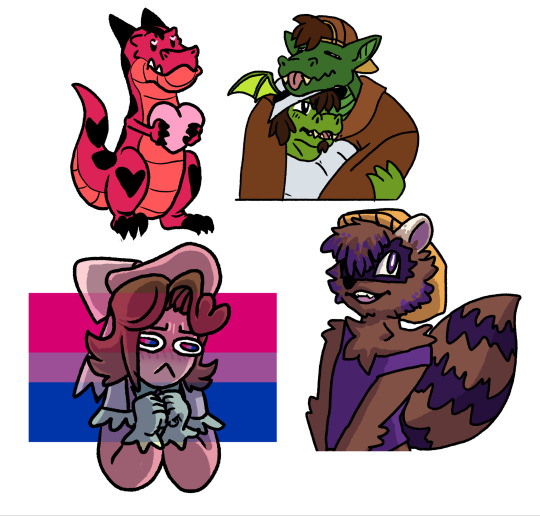

Had a bunch of technical difficulties on Sunday for my art stream but here's some of the stuff I drew!
28 notes
·
View notes
Text

After noticing patterns over the years, I created this list with 13 points to score the level of stereotypes about sharks present in a work. I believe that most of these stereotypes have their main origin in the film Jaws (1975).
With the scarcity of works that explore other creative approaches to sharks, beyond the “man-eating ” narrative, Jaws ended up consolidating itself as the greatest source of inspiration and creative reference for many productions to this day. This was called “The Jaws Effect”. 🩸🦈
I've noticed that certain patterns in the creative world repeat themselves to the point of being tedious, which bothers me. Not because they're bad, but because in many cases they're harmful. With these points, I hope to show sharks in a new light.

🩸1 - Great White Shark Popularized by the Jaws movie, the Great white shark has become the dominant archetype in the representation of sharks in fiction. Often, works choose to use this shark or a generic gray version of imprecise anatomy, with no defined species. However, there are over 400 species of shark, and very few are explored creatively.

🩸2 - Man-eater The persistent idea that sharks have humans as a natural part of their diet is one of the most widespread stereotypes. Although there are reports of incidents, most attacks are isolated and often by mistake. Any animal, including humans, could turn to unexpected sources of food in a situation of desperation or starvation.
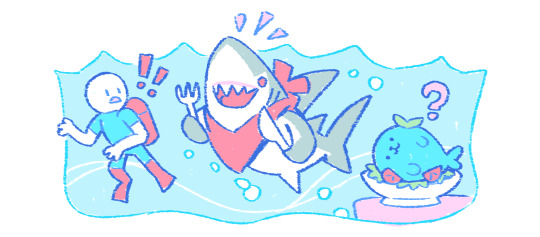
🩸3 - Forced Behavior It's common to see sharks portrayed with distorted or exaggerated behaviors that don't match their nature just to cause tension, such as:
Hunting small fish, ignoring the fact that sharks avoid expending energy on low-energy prey.
Abandoning easy prey just to arbitrarily chase the protagonist.
Going crazy at the smell of blood.
Showing a wild and constant hunger.
Obsessively pursuing a single prey.
Making aggressive shark species known for being peaceful or timid.
Attacking and destroying objects, structures or vessels with disproportionate fury just to reach someone.
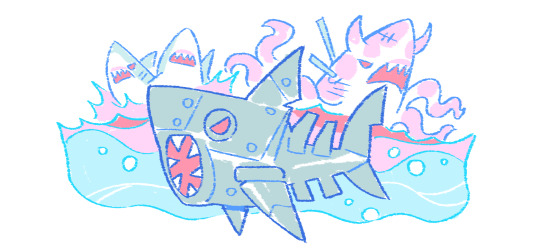
🩸4 - Monstrous appearance It's common to see sharks' appearance exaggerated to intensify visual fear, making them look like monsters rather than real animals:
A gaping mouth, with huge, crooked teeth that are constantly stained with blood.
Menacing, demonic red, black empty and soulless eyes.
Body covered in grotesque scars, exposed wounds and even weapons embedded in the skin.
A disproportionate figure, with pointed shapes, a swollen or deformed body.
Bizarre mutations that completely alter their anatomy.
Technological modifications to make them more weapon-like, emphasizing the idea of the "Killing Machine".

🩸5 - Shark de-characterization Especially in children's works, in order to be accepted by the public or the other characters in the plot, the shark is often forced to change its identity. It is transformed into a “domesticated” version, such as:
Becoming a vegetarian or a toothless shark, losing its ecological role as a predator.
Taking on exaggeratedly “funny” behavior, becoming a caricature.
Having its behavior and appearance altered to look more like a dolphin or other friendly shape, excluding striking features such as prominent fins, visible gills or a fusiform snout.
Choose to portray a specific species of shark because it seems more “friendly” to the public, such as the whale shark.

🩸6 - Limited Nature The representation of sharks in fiction is usually limited to sensationalist aspects, such as the power of their bite, the old phrase that they "smell a drop of blood in 2 million liters of water", or things like "killers from the womb".
However, sharks have some very interesting characteristics that are little explored creatively:
Acute hearing, capable of picking up sounds more than a kilometer away in the ocean.
Their electroreception, which allows them to perceive tiny electrical impulses emitted by living prey and even sense the electromagnetic field around them.
Possible link between their migrations and the lunar phases.
Incredible healing capacity and immune resistance.
Skin made up of denticles made of the same material as our teeth.
They constantly change their teeth.
Longevity and they never stop growing.
Many fish such as rémoras and pilot fish depend on and live alongside sharks.
Sensitive to pressure changes and can even predict hurricanes and tropical storms.

🩸7 - Red Presence Striking presence of red, either with the presence of blood or the color present in the design. This emphasis on red reinforces the shark's direct association with violence, danger and death, contributing to the construction of the “bloodthirsty monster” stereotype.

🩸8 - Dark Music It is common for sharks to be associated with tense, dark and threatening soundtracks whenever they appear on the scene. More often than not, I notice that when sharks are mentioned in song lyrics, it is to express some sort of comparison to some negative stereotype.

🩸9 - Threatening setting Scenarios with sharks are almost always represented in a gloomy, dark, desaturated way, empty of marine life. The environment is treated as a dangerous place by nature, shipwrecks, dark caves, areas full of garbage, explosive mines or the inhospitable depths of the sea

🩸10 - Masculinization The theme involving sharks has always been very masculine. Shark characters are rarely female, while the human characters who interact with these animals, scientists, hunters, divers or specialists, are almost always white men. Women and minorities almost never occupy central or specialized roles in these narratives.

🩸11 - Villainization Sharks are often portrayed as villains by default, carrying negative and caricatured stereotypes, for example:
Gangster or mobster
Aggressor or school bully
Criminal or loan shark
Brutish idiot or dumb henchman
Corrupt politician or authoritarian fascist figure
Indomitable monster or irrational beast
Recurring enemy, obstacle or final boss in video games

🩸12 - Objectification Sharks are often treated as mere resources or utilitarian objects in fiction. They are represented as trophies, rewards, collectibles or consumables, as if they existed only to be hunted, exhibited or eaten.
This objectification also appears in the constant presence of jaws decorating environments, teeth used as accessories, fins amputated as an ingredient, and in the display of the animal's body in a morbid way: corpses exposed, dead body hung and displayed as a trophy in harbor, parts dissected or being devoured by other creatures.

🩸13 - Death As if it weren't enough to have become a symbol of death incarnate, even in animations aimed at children, sharks almost always have the same fate: death. What's worse, their death is usually celebrated as a relief or a victory.
Impaled, butchered, set on fire, crushed, blown up, fished out or killed by another "heroic" creature, tossed about by hurricanes… In many cases, these scenes are treated with humor or graphic exaggeration, turning the destruction of the shark into a spectacle.
---
I was unsure about publishing this list as it is just personal observations from someone who loves sharks. A few people asked me for this list and said it would be worth posting, don't take it too seriously.
These stereotypes are not necessarily bad or invalid, after all, we are talking about works of fantasy and fiction. However, they could be resignified through new creative ideas that arouse feelings other than fear and terror.
Although many people's passion for sharks arose precisely from movies like Jaws and the stereotypes it popularized, it's important to remember that these same elements have been repeated almost unchanged for decades. This exhaustive repetition was largely because it was profitable, turning sharks into yet another victim of entertainment capitalism. Over time, this type of representation ended up distancing ordinary people from the reality of these animals, reinforcing fear rather than curiosity. Nowadays things are a little better, but not better enough.
The reality of sharks goes far beyond that. They are mysterious and fascinating animals, older than the first trees or dinosaurs. They have survived five mass extinctions, incredibly adapted from the abyssal depths to mangroves and freshwater rivers. They have unique senses and behaviors that are still shrouded in mystery, as well as a biology so singular that it inspires advances in science and technology. For many ancient cultures, sharks are revered as true gods of ocean balance.
I dare say that by looking after the health of the seas for millions of years, sharks made it possible for our own species to emerge from the depths of the primordial ocean. They are, in a way, guardians of our cradle of origin. And so we owe them a great deal of respect and preserve them at all costs.
To date, no creative work has managed to surpass “Jaws”. Who will be creative enough to create a new work and transform the collective imaginary of sharks from fear to fascination? 🦈✨
2K notes
·
View notes
Text
youtube
Another YouTuber (Crispy’s Tavern) talk about Lily Orchard (CD-C) Baldur’s Gate 3 Video. Also mention Dragon’s Inquisition and uses Sai “CD-C Crash Out” video so 30% to Sai then./j
#youtube#cd call#lily orchard critical sphere#cd call critical#lily orchard#sai scribbles#baldur's gate 3#Crispy’s Taverns#dragon age inquisition
9 notes
·
View notes
Text
This video by Professor Bopper is interesting
youtube
0 notes
Note
In your view/experience. is the rate of "incompleteness" among webcomics more or less the nature of online personal projects as a whole? Or is there something specific to webcomics like laboriousness, audience expectations, relative medium infancy or whatnot?
well for one thing webcomics has changed significantly in the last ten years. it used to have a much lower barrier for entry, just get a smackjeeves account or set up a website with a wordpress plugin. starting a webcomic when i started my webcomic vs starting a webcomic now are totally different experiences.
so i can only speak to people who started their webcomics roughly ten years ago. and roughly ten years ago a lot of us were a whole lot younger with a lot more time and energy to spend on a comic for free. this part is probably still somewhat true for new artists.
but then you get older. your ideas change. your skill develops and the old stuff isn't as good. or you don't have as much time, you got a day job. unless you're one of like five people on earth your webcomic is not paying your rent. you need to make money. your shoulder hurts. you're 30 now. you're struggling to make updates on time between whatever else makes you happy and what else you need to do to live. you wrote this story when you were 21, you don't relate to it anymore, you have different ideas, you've grown up, your audience has noticeably dropped off from the peak, social media managing is hard, you have to go to work, you're so tired, all the time.
it's a lot of things.
10K notes
·
View notes
Text
Are you 🫵 pissed off about the Lilo and Stitch monstrosity remake? Do you want to know how you can actually make a difference in supporting the people and ecosystems of Hawaii?
Tourism is a big issue in Hawaii (which the remake got rid of the original's commentary on because it makes foreigners look bad). I'm not gonna promote it, BUT I know that realistically, thousands of people arrive here every single day by the airplane-ful. And the majority of them aren't educated on the socio-cultural and economic impacts of tourism. SO, I'm making this post in an effort to educate visitors. If you or someone you know is visiting or moving to Hawaii (whether by circumstances in or out of your control), here are some suggestions on how you can give back!
You can donate to the Hawaii Community Foundation, which has been instrumental in giving aid to the displaced community of Lahaina after the Maui wildfires in 2023. They also provide scholarships to students of under-represented communities.
If you're interested in visiting Kualoa Ranch, you can do their Mālama Experience where you get your hands dirty giving back to the ‘āina (land)!
There are other organizations you can join to volunteer with, too, like Kupu and Mālama Maunalua. Check them out; maybe you can help with a beach cleanup or plant native trees! These are both non-profit organizations that accept monetary donations.
Visit the Bishop Museum to learn about Hawaiian history and culture! They also have events focused on sustainability and conservation.
If you're visiting Hilo on the Big Island, go visit the Laulima Nature Center! They're a non-profit aimed at protecting Hawaii's native species, and they even have an online store that ships to the US mainland and internationally! (After I post this, I'm gonna head on over and get myself a manu o Kū pin ♡)
A few other tips I have:
DO: Respect the locals' homes. Several beaches and hiking trails have access points in residential areas. Please be mindful to keep your voices down when passing by, and park ONLY in designated parking areas.
DO: Wear reef-safe sunscreen! Sunscreens containing oxybenzone and octinoxate are banned in Hawaii because they are known to damage coral reefs.
DON'T: Approach wildlife, particularly honu (sea turtles) and 'īlio holo i ka uaua (Hawaiian monk seals). Stay at least 10 feet (3 meters) away from turtles and at least 50 feet (15 meters) away from monk seals. If you see someone harassing animals, report them to the statewide NOAA Marine Wildlife Hotline: (888) 256-9840. You can also contact the Hawaii State Department of Land and Natural Resources.
DON'T: Collect sand, rocks, or other natural items to bring home with you. This is to protect the ecosystems and also out of respect for Kānaka Maoli (Native Hawaiians), who have cultural beliefs regarding lava rocks in particular. Taking lava rocks is extremely disrespectful.
DON'T: Litter! Please throw away your waste in proper trash cans. If you see a bin that says "ʻōpala," that's a trash can!
Many Kānaka Maoli (Native Hawaiians) are moving to the US mainland because the cost of living in Hawaii has been driven up so high (because of people moving here), they can't afford to live in their ancestral home. So, if you are going to visit or move to Hawaii, please:
- Make the effort to support local businesses, especially those owned by Native Hawaiians!
- Educate yourself and your loved ones about actual Hawaiian culture!
- Try Hawaiian food, like poi!
- Learn some Hawaiian words and don't be afraid to ask how to pronounce words correctly!
- Donate to a food bank!
- Watch films and read books written by Native Hawaiians!
My hope is that whoever sees this post will use it to educate themselves, their friends, and their families who are considering visiting.
My background is in sustainability and the environment, so that's what I know to suggest off the top of my head. If any Kānaka Maoli read this post and have suggestions to add, please do!
50K notes
·
View notes
Text
youtube
Spiting Straight Facts
0 notes
Text
youtube
Obviously Self-Explanatory. Another Person tackling Bad Vivizepop Criticism
5 notes
·
View notes
Text
Honestly I don't know where to say this so I'll say it here.
Please read Marionetta, I need someone to talk about it.
It's the story of a young woman who was raised and fed pro government propaganda and then she quite literally dies and ends up making a contract with an otherworldly being, now being tied to a wandering circus she has a limited time to comply with her contract before she dies for real and in the process we see her grow and open her eyes to the reality of her world and how the government actually affects the people in it.
It's really well done, the main lead is actually really interesting and it's so good to see her grow, there's lesbians, an interesting world built in heavy prejudices and imperialism and you can actually see it being both addressed and casually done in every day actions and dialogue, the background of the characters is incredibly interesting and it's going to go into a pause before getting into the final chapter.
Probably one of the most interesting finds I have gotten in Webtoon and the art is EXQUISITE, couldn't recommend it more.
41 notes
·
View notes
Note
Here Casually Comic review of I AM NOT STARFIRE
youtube
youtube
I think she will provide some much needed nuances for the situation at hand
I know I'm supposed to be taking a long break from this site but I want to say that you've being doing a fantastic job with the video essays you've putting out and I cannot wait to see more. Hope the rest of your spring holiday is well.
I know Sarah Z already did a video on "Sacrificial garbage" but perhaps one day, you could make a video essay on the likes High Guardian Spice, I Am Not Starfire*, Lightyear, Wish and some others (like the Disney live-action remakes) and talk about why, on their own merits, they failed as stories in spite of the diversity, not because of it.
*Personally, from what I've seen of it, I Am Not Starfire wasn't that bad, just very meh to okay at best. I still love Mariko Tamaki's work nevertheless and I cannot wait to see what she works on next.
Thank you! Honestly, that is something I would like to discuss, because the hate Mariko Tamaki gets is absurd, especially considering how great her other works are.
22 notes
·
View notes
Text
Spring 2025 Anime Lineup: The Most Anticipated Series of the Season
The Spring 2025 anime season is shaping up to be one of the most exciting in recent years, packed with highly anticipated sequels, brand-new adaptations, and original projects from some of the biggest names in the industry.
Whether you’re a fan of action-packed shōnen, heartwarming slice-of-life, intense psychological dramas, or fantastical adventures, this season has something for everyone.
From the return of Fire Force and Black Butler to the anime adaptation of The Beginning After the End, here’s a complete breakdown of what to expect in Spring anime 2025, along with the directors, studios, and voice casts where available.
Lazarus

Genre: Science Fiction, Thriller
Studio: MAPPA
Director: Shinichirō Watanabe (Cowboy Bebop, Samurai Champloo, Space Dandy)
Release Date: April 5, 2025
When Shinichirō Watanabe announces a new project, anime fans take notice.
'The legendary director behind Cowboy Bebop, Samurai Champloo, and Space Dandy returns with Lazarus, a gritty sci-fi thriller set in a near-future world where a newly developed painkiller is later revealed to be a fatal poison.
As humanity scrambles for survival, a select group is tasked with uncovering the sinister truth behind the drug’s creation.
With MAPPA handling the animation, expect high-intensity action, philosophical storytelling, and stunning visuals.
Fire Force Season 3

Genre: Action, Supernatural
Studio: David Production
Director: Tatsuma Minamikawa (Fire Force Season 2, Fairy Tail: Dragon Cry)
Release Date: April 2025
The long-awaited return of Fire Force is finally here. After the shocking revelations of Season 2, Shinra and Company 8 must prepare for the ultimate showdown against the Evangelist and the White-Clad.
With Fire Force being a prequel to Soul Eater, fans are eager to see how the connections between the two series unfold.
With David Production (JoJo’s Bizarre Adventure) returning to animate the season, expect explosive action sequences, high-energy battles, and jaw-dropping animation.
Black Butler: Emerald Witch Arc
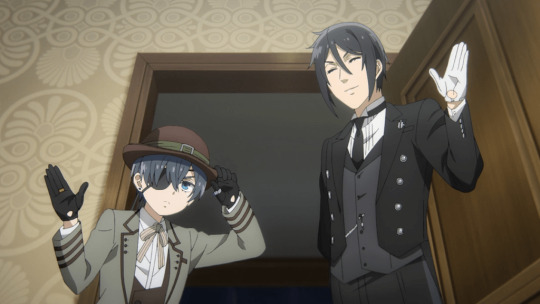
Genre: Supernatural, Mystery
Studio: CloverWorks
Director: Kenjirou Okada (March Comes in Like a Lion, RWBY: Ice Queendom)
Release Date: April 2025
Ciel Phantomhive and his ever-loyal demon butler Sebastian Michaelis return for another mystery-filled adventure in Black Butler: Emerald Witch Arc.
Adapted from Yana Toboso’s critically acclaimed manga, this new season takes Ciel and Sebastian to the Emerald Isles, where they face a dangerous new opponent—a powerful witch with an army of the undead.
With CloverWorks handling the animation, expect gothic visuals, atmospheric storytelling, and a gripping supernatural mystery.
Aharen-san wa Hakarenai Season 2

Genre: Comedy, Slice of Life
Studio: Felix Film
Director: Tomoe Makino (Aharen-san wa Hakarenai Season 1, Hori-san to Miyamura-kun)
Release Date: April 2025
The wholesome and quirky duo of Reina Aharen and Raidou Matsuboshi return in Season 2 of Aharen-san wa Hakarenai.
This season promises more awkward yet adorable moments, with Aharen’s unpredictable behavior continuing to confuse Raidou in the most entertaining ways.
With Felix Film reprising its role as the studio, fans can expect the same lighthearted comedy and soft pastel visuals that made Season 1 a hit.
The Beginning After the End

Genre: Fantasy, Adventure
Studio: A-1 Pictures
Director: Naoyuki Itou (No Guns Life, Overlord)
Release Date: Spring 2025
Based on the hit web novel and manhwa, The Beginning After the End follows King Grey, a once-powerful ruler who is reincarnated into a magical world where he seeks redemption for his past life.
This highly anticipated adaptation is expected to bring epic battles, deep character development, and high fantasy world-building.
With A-1 Pictures (Sword Art Online, 86) behind the animation, the fight scenes and magical effects are sure to impress.
Go! Go! Loser Ranger! Season 2
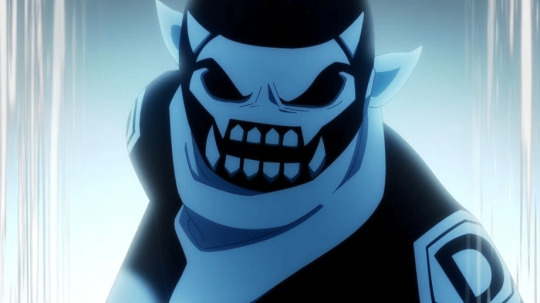
Genre: Action, Comedy
Studio: Yostar Pictures
Director: Keiichi Sato (Tiger & Bunny, Karas)
Release Date: April 13, 2025
The anti-hero tokusatsu-inspired comedy returns for a second season as the villains of the Ranger Force fight to reclaim their dignity.
With high-energy battles, sentai parody humor, and unexpected twists, Go! Go! Loser Ranger! continues to deconstruct superhero tropes in a hilarious and action-packed way.
With Yostar Pictures bringing dynamic action sequences and Keiichi Sato directing, fans can expect fast-paced, over-the-top battles with comedic flair.
Jujutsu Kaisen: Culling Game Arc

Genre: Action, Supernatural
Studio: MAPPA
Director: Shōta Goshozono (Jujutsu Kaisen Season 2)
Release Date: Spring 2025
The Culling Game arc is one of the most intense storylines in Jujutsu Kaisen, featuring Yuji, Megumi, and their allies fighting for survival in a deadly sorcerer tournament.
Expect high-stakes battles, powerful new curses, and shocking revelations that will shake the series to its core.
With MAPPA continuing as the studio, fans can expect fluid fight choreography, dark storytelling, and jaw-dropping animation.
You Ready for Spring Anime 2025?
Spring 2025 is shaping up to be a legendary anime season, with a perfect mix of high-energy sequels, fresh adaptations, and original projects from some of the best studios and directors in the industry.
Which anime are you most excited for this season?
Let us know in the comments, and be sure to mark your calendars for the Spring anime 2025 premieres!
Source: Spring 2025 Anime Lineup: The Most Anticipated Series of the Season
105 notes
·
View notes
Text







So @sjbattleangel tagged me to come up with some of my top 5 favourites in various forms of media and so, here they are! If I included my honourable mentions we'd be here all day, but these are my faves, right now anyway! @bookofmac @gasstationcandy @raccoonwarlock @earlmothraoffangbanger @agramuglia @saiscribbles I challenge you to come up with a few of your own!
(I added books and comics but that wasn't part of the original challenge if you want to leave them out. :> )
39 notes
·
View notes
Text
This video is about the “Subjective” Top 100 Anime Openings (OP)
youtube
This video not only gives some recommendation on Anime and Music, and also the process on how JelloApoccalypse and crew judge these OP that you can used too. Despite his arrogance as of later he does know his stuff.
1 note
·
View note
Text
They nuked my tasteful gay furries community :ccc
I'm sad now...
21 notes
·
View notes
Note
youtube
Here is a video explaining the Chis Savino situation for context
I still won’t forget when CD praised the loud house creator(the guy who is a creep) for the bare lgbt rep and said ND Stevenson and Sugar should be embarrassed being ‘out matched’ by a straight guy
https://youtu.be/2UmVDC3E_oQ?si=jQw9knau5ZFcqLRU
Straight white man who will never know what it's like to be gay VS. two gender nonconforming people who did what they could and fought as hard as they could to get the gayness they wanted.
Lily shut the fuck up.
196 notes
·
View notes
Text
How Lily Draws In Her Audience
One of the more disturbing aspects of Lily’s influence is that she specifically attracts people who are vulnerable—people who have been abused, marginalized, or mistreated—and then weaponizes that against them.
For abuse survivors, especially those who are still healing, it’s easy to latch onto someone who speaks with absolute certainty. Lily presents herself as someone who’s been through it all, who knows what abuse looks like, who sees through manipulation—but in reality, she just demands blind loyalty and paints anyone who questions her as an abuser.
A few ways she traps people:
She presents herself as an authority on abuse. Since many of her fans are survivors, they naturally trust her judgment. But she exploits that by redefining abuse to suit her needs, convincing them that anyone who criticizes her must be an abuser.
She provides a "safe space"… that’s actually a trap. The more people invest in her community, the harder it is to leave. If they start questioning her, they risk losing their entire support system.
She feeds into their fears and trauma. Many of her fans have a deep fear of being manipulated again. Instead of helping them build healthy skepticism, she teaches them to see her enemies as manipulators while blindly trusting her.
She isolates people from outside perspectives. Any criticism of her is framed as “transphobia,” “abuse apologism,” or “bad faith.” This keeps people locked into her narrative because they fear being seen as bigots or enablers.
Lily also specifically appeals to neurodivergent and LGBT+ fans by framing herself as a champion for marginalized groups—someone who "tells it like it is" and "fights for the oppressed." But in reality, she weaponizes their experiences and struggles to keep them under her control.
How She Hooks Neurodivergent Fans
A lot of neurodivergent people, especially autistic folks, struggle with black-and-white thinking, difficulty navigating social nuance, and a strong sense of justice. Lily exploits these traits by:
Presenting herself as a voice of moral clarity. Many ND people prefer clear-cut rules over messy social politics. Lily gives them that by framing every situation as good vs. evil.
Encouraging "righteous" anger. Many ND people have been dismissed, gaslit, or ignored in real life. Lily taps into that frustration, making them feel validated—while directing their anger toward her enemies.
Punishing critical thinking. If someone questions her, she dismisses them as "brainwashed," "supporting abusers," or "part of the problem." Since ND people can already struggle with social cues, they may second-guess their own instincts and default to trusting her version of events.
Using a rigid rule system. Her community operates on a set of unspoken but harsh, inflexible rules. Break one, and you’re ostracized. Many ND people follow strict rules in social settings to avoid conflict, so they adapt to Lily’s without realizing they’re being manipulated.
How She Hooks LGBT+ Fans
Lily markets herself as an unapologetic trans woman who doesn’t care what cis people think. This attracts other trans and queer people, many of whom have faced discrimination and feel like they have to “play nice” in society. Lily offers them an alternative:
"You don’t have to be polite anymore." She encourages LGBT+ fans to be openly hostile to their critics. This is appealing to people who have been bullied, harassed, or discriminated against. But instead of healthy boundary-setting, Lily fosters a siege mentality—"you’re either with us or against us."
Weaponizing transphobia accusations. Any criticism of her, no matter how valid, is labeled transphobic. This makes her LGBT+ fans afraid to question her, because they don’t want to be seen as betraying another queer person.
Claiming she understands LGBT+ oppression better than anyone. She dismisses any queer person who criticizes her. She uses this as a way to delegitimize her LGBT+ critics—even though many of them respect her identity but simply disagree with her behavior.
Lily’s entire mode of operation hinges on controlling the narrative. She doesn’t present arguments—she declares facts and expects her audience to accept them without question. If you challenge her version of events, you aren’t just wrong in her eyes; you’re malicious, an enemy, a “stalker,” or a “bad faith actor.”
This is why she never provides evidence or proof for her claims. She doesn’t feel she needs to. Her authority as a figure in her community is enough for her followers. If Lily says something, then it’s true by default. Any contradictions or inconsistencies get hand-waved away because her fans trust her, not facts.
Her black-and-white mindset reinforces this. There is no room for nuance in her world. Either you support her fully or you’re against her completely. There’s no middle ground. This ensures that even when people start noticing inconsistencies, they’re unlikely to speak up for fear of being branded as part of the enemy camp. It’s easier to rationalize the contradictions than to risk being exiled.
This same strategy applies across all aspects of her behavior. She tells her fans Joon the King’s documentary is just drama and should be ignored—so they ignore it, despite the fact that it presents mountains of evidence.
This is why Lily thinks she can lie so freely. She assumes her audience won’t remember or care if she contradicts herself. And in many cases, she’s right. Because she’s conditioned them to trust her above all else.
346 notes
·
View notes